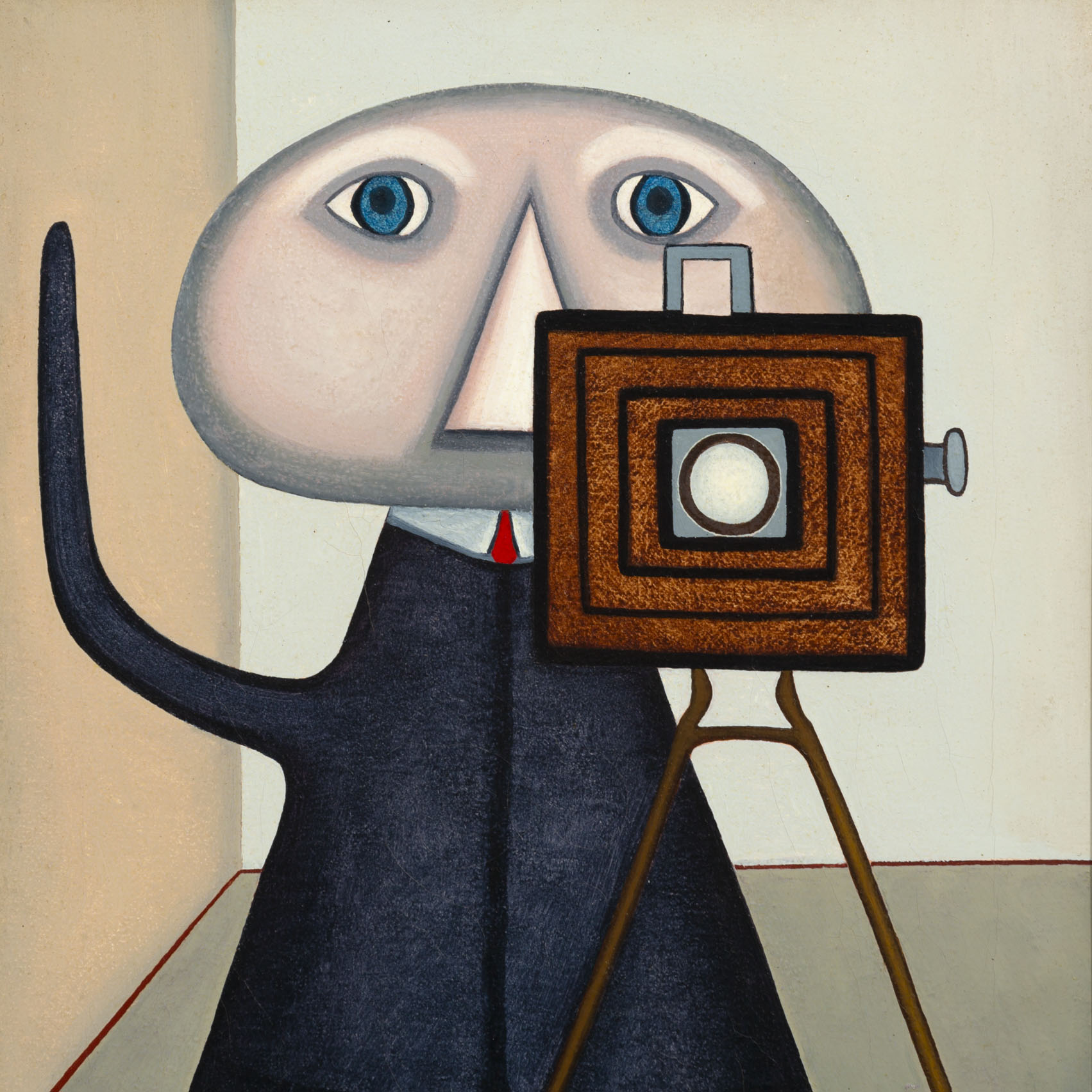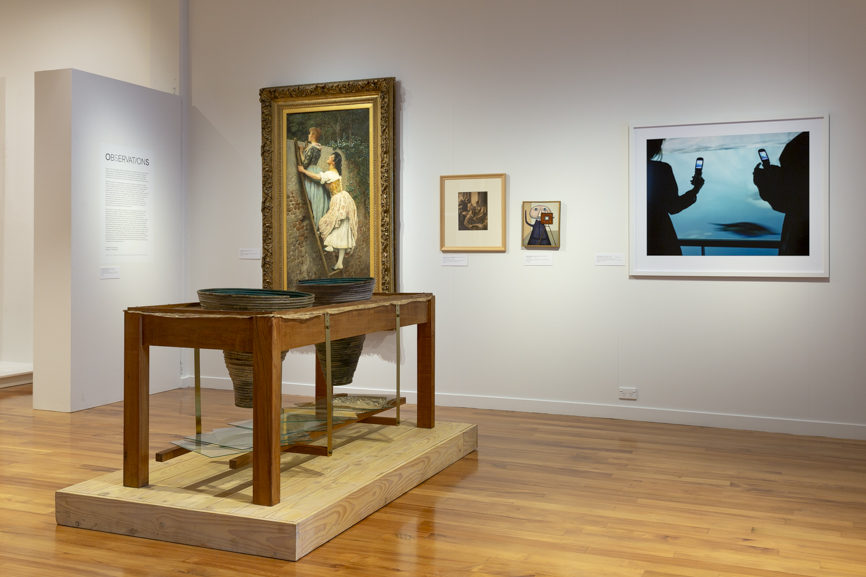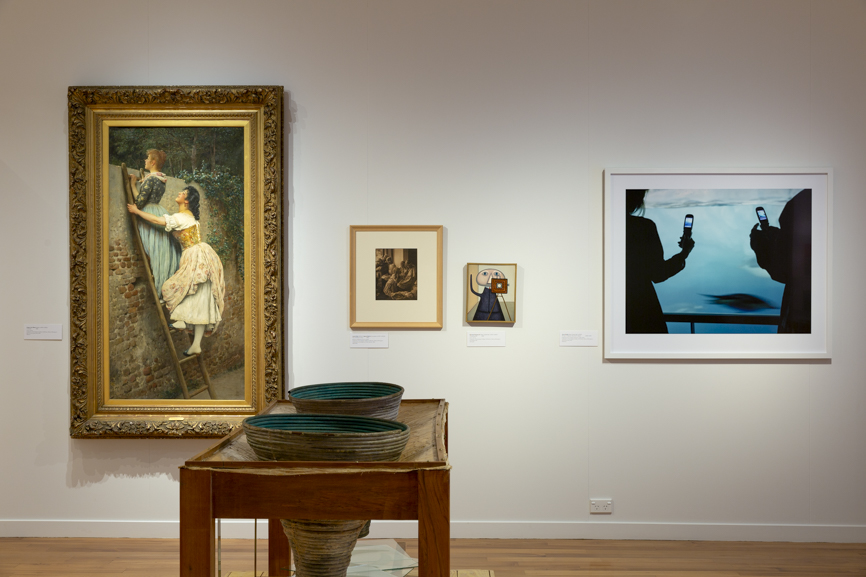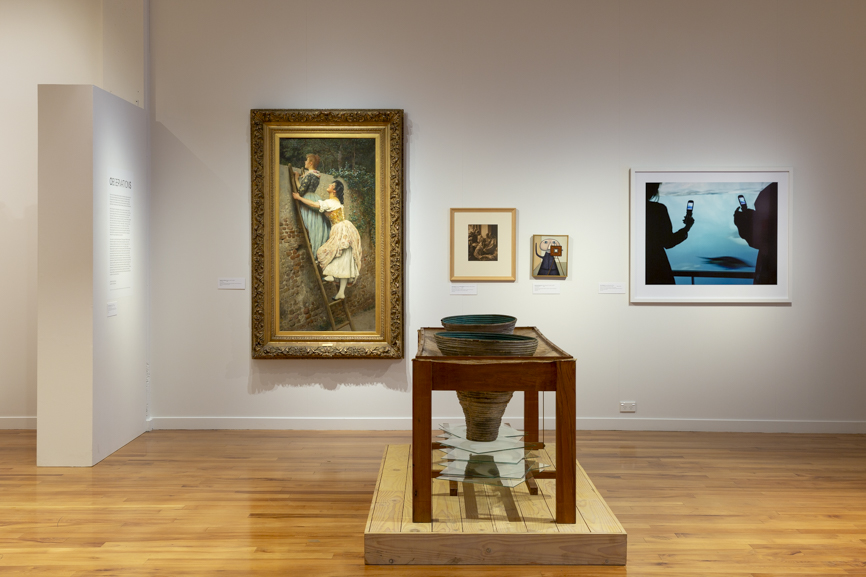Observations: From the Collection / 18 March – 30 June 2023
Observations: From the Collection
Drawn from the Sarjeant Gallery collection, this exhibition looks at some of the ways we see and experience the world around us and how these methods of observation have altered over time. The selection of artworks on display highlight some of the senses and tools we have employed in making these observations: including our use of sight and hearing; cameras and mobile phones.
Before the advent of photography society was reliant on artists to provide lasting records to communicate our stories of people and events. Curiosity by Eugen von Blaas (1891) shows two young ladies perched on a ladder against a brick wall. As they peer over in obvious enjoyment the source of their entertainment remains a mystery and we are left in a state of endless suspense and curiosity. Radio became widespread in the 1920s as the main source of news and entertainment. From 1922 – 1964 the BBC’s ‘Children’s Hour’ was broadcast every day of the week at 5pm. The Children’s Hour (1923) by Janet Allan and Agnes Martin shows a group of girls in gingham smocks sharing headphones and straining to listen to the program. While at the lower right their younger sister clutches her doll and looks on longingly as there aren’t enough headphones to go around.
As you lean in to view Michael Illingworth’s Photographer. 1968 the viewer becomes the subject. The smartly dressed photographer waves his arm to keep your attention while you ‘pose’ in front of his vintage camera. The observer becomes the observed once more in Anne Noble’s Penguin (Nagoya Aquarium) Japan from her Antarctica series (2003). While the visitors are supposedly there to see the penguins, Noble makes the point that they are recording the view through their tiny mobile phone screens rather than actually watching the expansive underwater vista in front of them, causing the real penguin to become a secondary blur. Andrew Drummond’s Place for Observation of Dualities (1993-1994) highlights this dichotomy through the use of pseudo-scientific equipment, comprising of two chrysalis-like copper coils. These devices channel our attention downwards facilitating a heightened awareness of ‘the relationship between the earth and our place on it’[1]. Perhaps we are spending too much time recording our observations and scrolling through endless user-generated content rather than being active participants ourselves in the world around us.
Jennifer Taylor Moore
Curator of Collections
[1] Andrew Drummond – Observation/Action/Reflection published by Christchurch Art Gallery Te Puna o Waiwhetū, 2010, page 142






